We all want to keep our homes sparkling clean, but some well-intentioned routines are doing more harm than good—especially when it comes to your finishes. Whether it’s hardwood floors, stainless steel appliances, or natural stone countertops, those everyday habits could be slowly wearing away what makes your home shine. Just because something looks clean doesn’t mean it’s being cared for properly. If you’ve ever wondered why your surfaces don’t look quite as good as they used to, these sneaky cleaning mistakes might be to blame.
1. Mopping Wood Floors with Too Much Water

It might feel like water equals clean, but soaking your hardwood floors could be quietly wrecking them. According to the National Wood Flooring Association (NWFA), excess moisture causes warping, cupping, and long-term structural damage. Even if the surface looks fine after drying, the wood underneath may already be compromised. A slightly damp mop—not a wet one—is all you need for routine cleaning.
Wood is porous and expands when exposed to too much liquid, even sealed floors. Water can seep into seams or scratches and stay trapped there. Over time, this leads to that dull, uneven look that no polish can fix. A microfiber mop with a gentle wood-safe cleaner is your safest bet.
2. Using Vinegar on Stone Countertops

Vinegar is the darling of DIY cleaners, but it’s no friend to natural stone. As noted by Forbes, the acidity in vinegar can erode the sealant and etch the surface of materials like marble, limestone, and travertine. It might seem like a natural choice, but over time, it leaves your stone looking cloudy and pitted. That “clean” shine is often just the beginning of the damage.
The problem is that stone is reactive to acids, even mild ones. Once the seal is gone, everyday spills can stain the surface instantly. Instead, use a pH-neutral stone cleaner made specifically for granite or marble. It’ll clean without compromising the finish or structural integrity.
3. Scrubbing Stainless Steel with Abrasive Pads
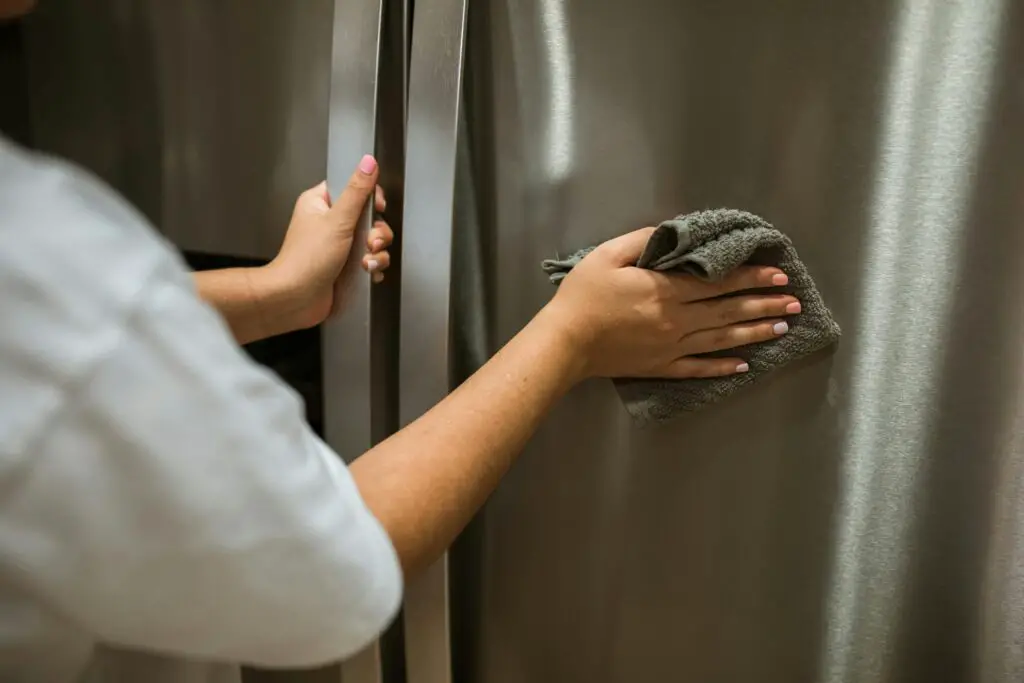
You might think steel can take anything you throw at it—but scratchy pads and powders can leave permanent marks. According to Better Homes & Gardens, using steel wool or abrasive scrubbers on stainless steel appliances ruins the protective finish and causes visible scratches. This not only dulls the look but can also lead to rust in high-humidity areas. Ironically, trying too hard to get rid of smudges might make them worse.
Instead, reach for a soft microfiber cloth and a stainless-steel-specific cleaner or even just warm water and dish soap. Always wipe with the grain to keep the surface smooth. If you do see scratches, they’re almost impossible to buff out without professional help. Prevention really is the best cure here.
4. Spraying Cleaner Directly on Electronics
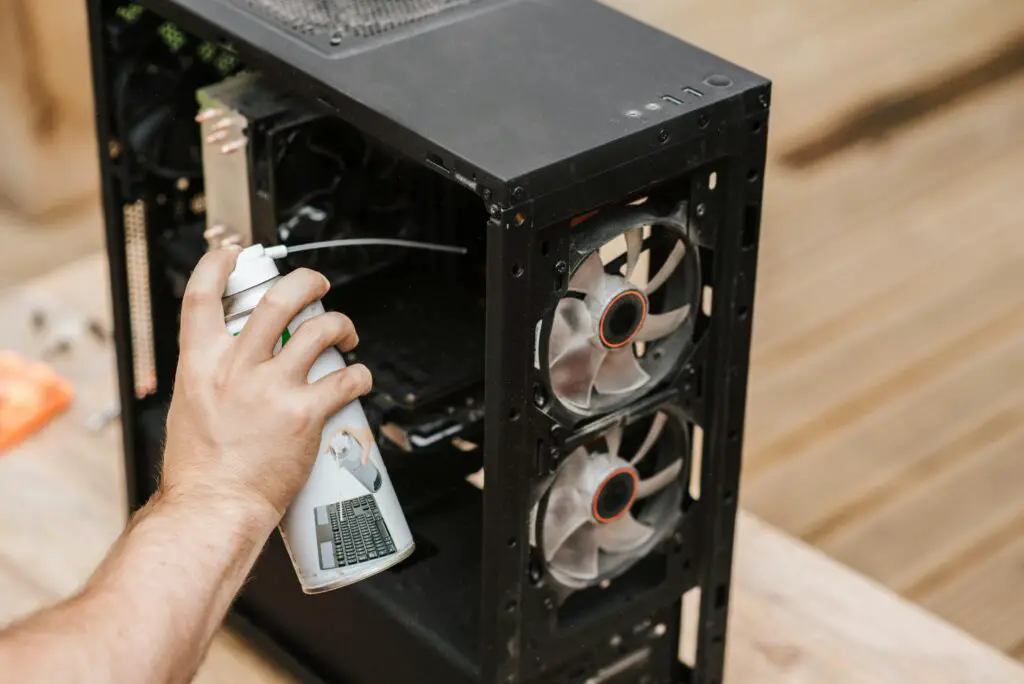
Cleaning your TV screen or laptop with glass cleaner may feel satisfying, but it’s one of the fastest ways to destroy delicate coatings. As noted by PCMag, spraying cleaner directly onto electronics can lead to streaking, screen damage, or liquid seeping into vents and ports. These finishes are often anti-glare or treated with anti-fingerprint layers that are easily stripped. Once that coating is gone, it’s gone for good.
Always spray your cleaner onto a microfiber cloth first, never directly onto the device. Better yet, use cleaners specifically designed for screens or just distilled water. Avoid paper towels too—they can leave tiny scratches. Treat your screens like lenses, not countertops.
5. Overusing Disinfectant Wipes on Wood Furniture

Disinfectant wipes are convenient, but they often contain alcohol or bleach that can dry out wood finishes. Repeated use can strip away protective coatings, leaving wood looking dull and feeling rough to the touch. You might notice cloudy patches or fading, especially on darker stains. What starts as a quick wipe-down can end with refinishing costs.
Instead, use a wood-safe cleaner and a soft cloth for regular dusting and maintenance. Reserve disinfecting wipes for high-touch, non-porous areas like doorknobs or remotes. If you’re worried about germs on wood, wipe gently with a damp cloth and follow up with a dry one. You’ll keep the luster without sacrificing hygiene.
6. Ignoring Rinse Cycles on Shower Tile
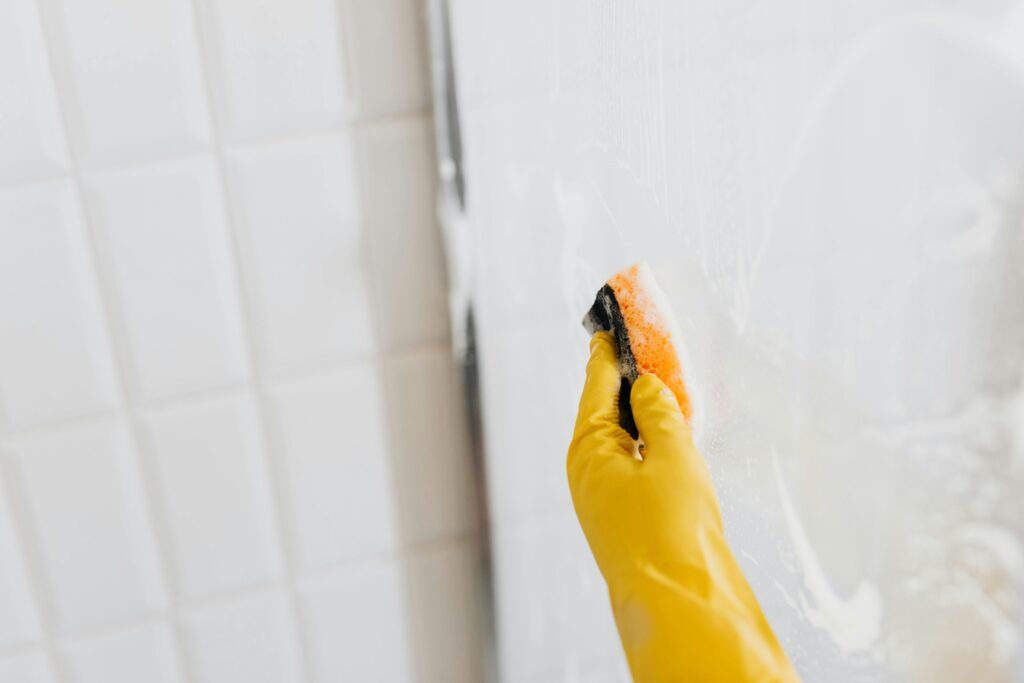
Spraying tile cleaner and walking away might seem efficient, but leaving product to dry can stain or damage grout. Many cleaners contain acids or surfactants that need to be rinsed thoroughly. If left too long, they can erode grout or leave a sticky residue that attracts more dirt. That “clean” look doesn’t last long when grime comes back twice as fast.
Always follow up your spray with a rinse—especially on porous surfaces like tile and grout. A quick splash or pass with a damp cloth is all it takes. For routine cleaning, a mild soap and warm water often work better than harsh chemicals. Consistency matters more than strength.
7. Polishing Furniture Too Frequently
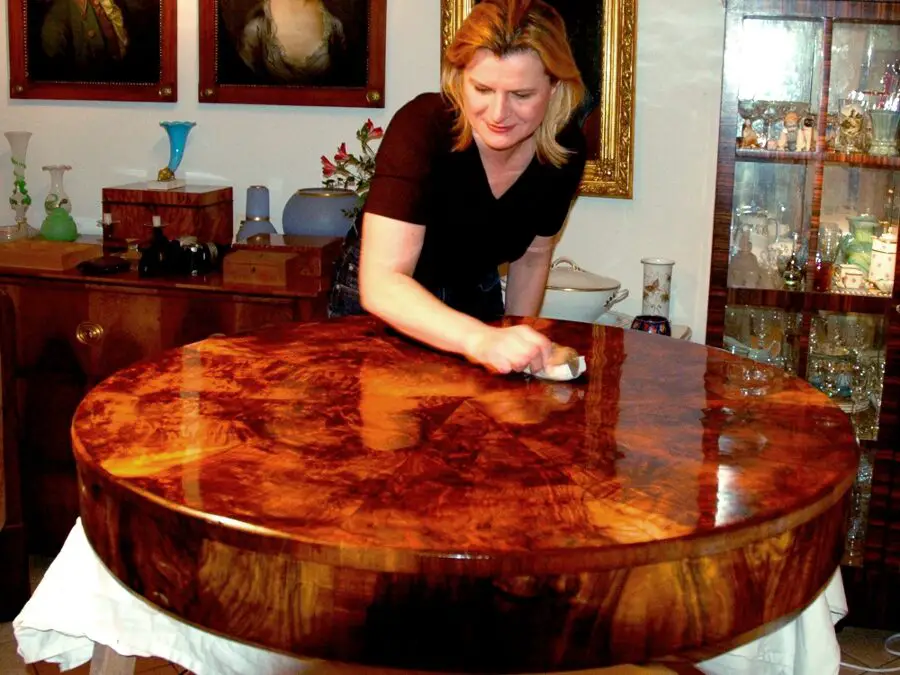
It feels luxurious to polish furniture often, but over-polishing can cause sticky build-up and attract dust. Many furniture sprays leave behind a waxy coating that layers with each use. Over time, this dulls the finish and can even lead to discoloration. What’s meant to protect ends up choking the wood instead.
Try polishing no more than once a month—or even less—depending on usage. For weekly upkeep, a dry or slightly damp cloth is enough. If build-up is already present, use a wood-safe cleaner that removes residue without damaging the finish. Less is more when it comes to shine.
8. Using Bleach in the Bathroom Too Often
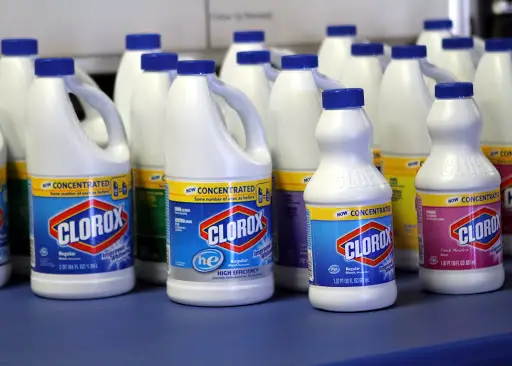
Bleach is powerful, no doubt—but overuse can erode caulk, pit tile finishes, and discolor metal fixtures. While it kills germs effectively, bleach also weakens the materials it’s meant to clean. In particular, it can break down grout sealant, making tiles more prone to mold and mildew over time. Ironically, your “clean” bathroom may be more vulnerable than before.
Use bleach sparingly and dilute it whenever possible. For regular cleaning, a vinegar and baking soda solution (on non-stone surfaces!) or a gentler disinfectant will do the trick. Rotate between bleach-based and non-bleach cleaners to preserve finishes. And always rinse thoroughly afterward to avoid surface damage.
9. Letting Soap Scum Sit on Glass Shower Doors

Soap scum doesn’t just look gross—it also etches the surface of glass over time. If left unchecked, it becomes nearly impossible to remove without damaging the finish. You might think you’re just dealing with water stains, but you’re really seeing long-term wear and tear. Hard water only makes the problem worse.
To avoid this, squeegee glass doors after every shower. It only takes 10 seconds but saves years of buildup. Use a glass-safe cleaner weekly, and avoid anything too abrasive. Your shower will stay clearer for longer, without the foggy “film” look.
10. Vacuuming Too Aggressively on Delicate Rugs
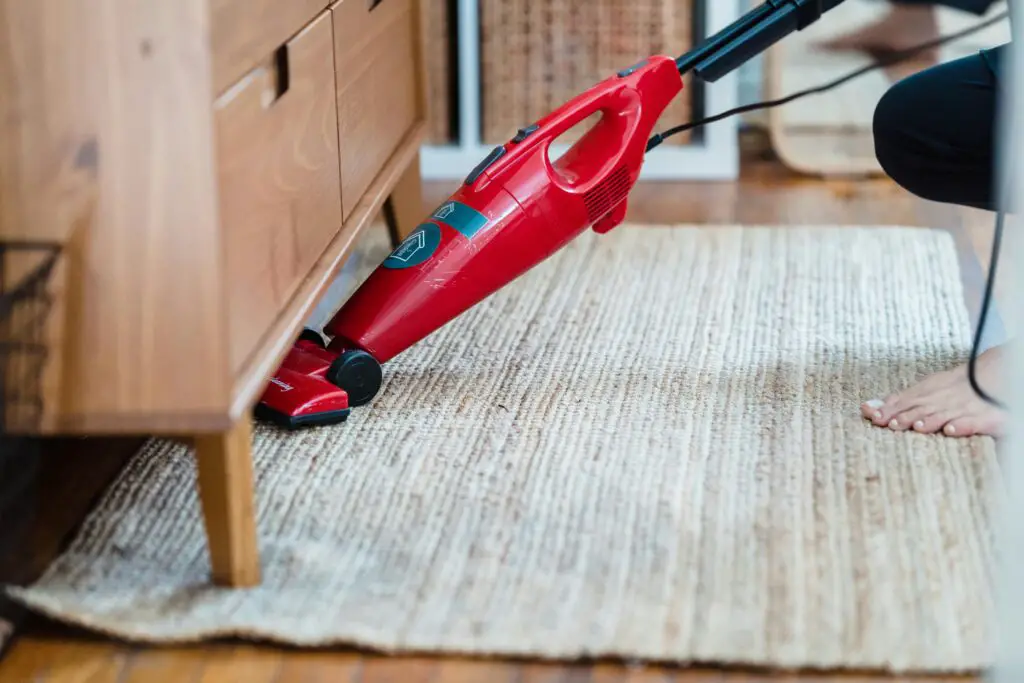
Going full-throttle on an area rug can pull threads loose and even unravel the edges. Suction that’s too high—especially combined with beater bars—can quickly wear down delicate fibers like wool or silk. If your vacuum sounds like it’s eating the rug, it probably is. The damage isn’t always immediate, but over time it adds up.
Switch to the lowest suction setting and turn off the rotating brush if possible. For hand-woven or vintage rugs, use a handheld vacuum or even a broom. Also, rotate rugs every few months to prevent uneven wear. Being gentle is the best way to keep the texture intact.
11. Washing Windows in Direct Sunlight
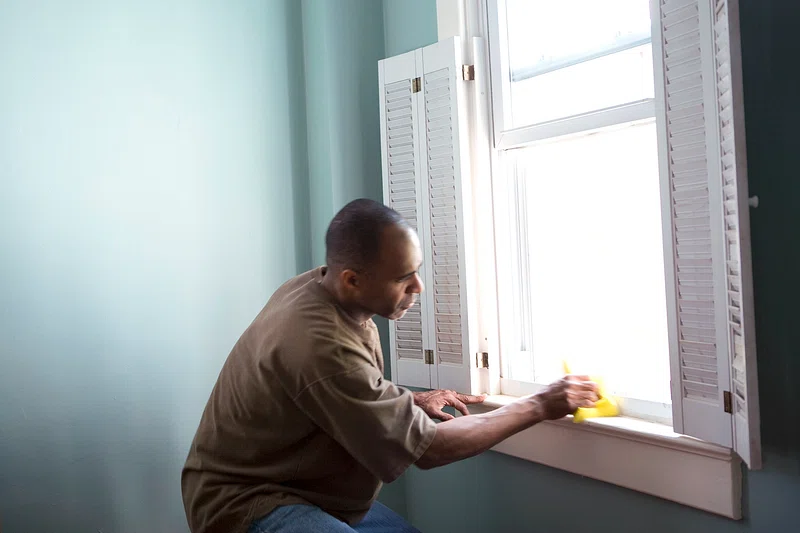
It seems like a sunny day is perfect for washing windows, but it’s actually the worst time to do it. The heat causes cleaners to dry too quickly, leaving streaks and even baked-on residue. That haze you can’t seem to wipe away? It’s probably from cleaning at the wrong time.
The best time to clean windows is early morning or late afternoon when temperatures are cooler. Work in the shade whenever possible, and wipe in circular motions with a microfiber cloth. Use a squeegee for larger windows to avoid drip lines. And skip the paper towels—they shed lint and can scratch.
12. Using Multipurpose Cleaners on Specialty Surfaces
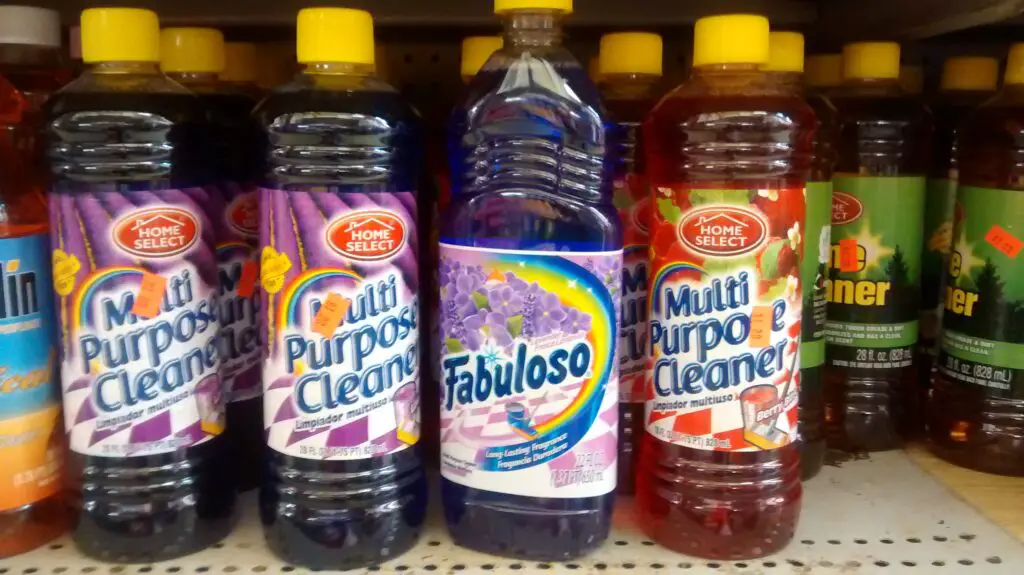
“Multipurpose” sounds great in theory—but these cleaners often aren’t safe for delicate finishes like lacquer, brass, or leather. They may contain alcohol, ammonia, or citrus oils that degrade protective coatings. The result? Blotchy patches, peeling sealants, or uneven wear.
Always read the label before spraying. If a surface is expensive or unusual, it probably needs its own cleaner. Specialty materials often have specific pH requirements or sensitivity to solvents. Stick to what’s made for the job—it saves you heartache (and cash) in the long run.
13. Forgetting to Dust Before You Disinfect
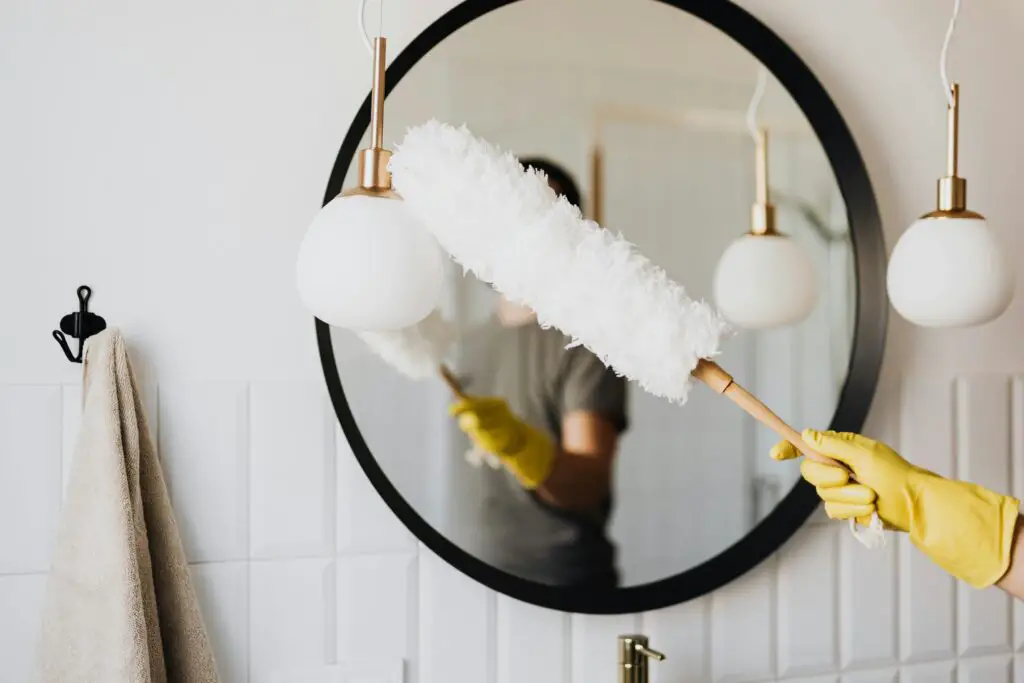
Disinfecting a dusty surface locks in grime and reduces the effectiveness of the cleaner. It might seem efficient to do it all at once, but it’s like painting over dirt. The finish becomes cloudy and dull, and you’re not truly disinfecting—just smearing debris around. Over time, this creates a film that dulls shine and traps particles.
Always dust first using a microfiber cloth or duster. Then follow with your disinfectant of choice. This two-step method is quicker than it sounds and far more effective. Your finishes will thank you by staying clear and vibrant.
